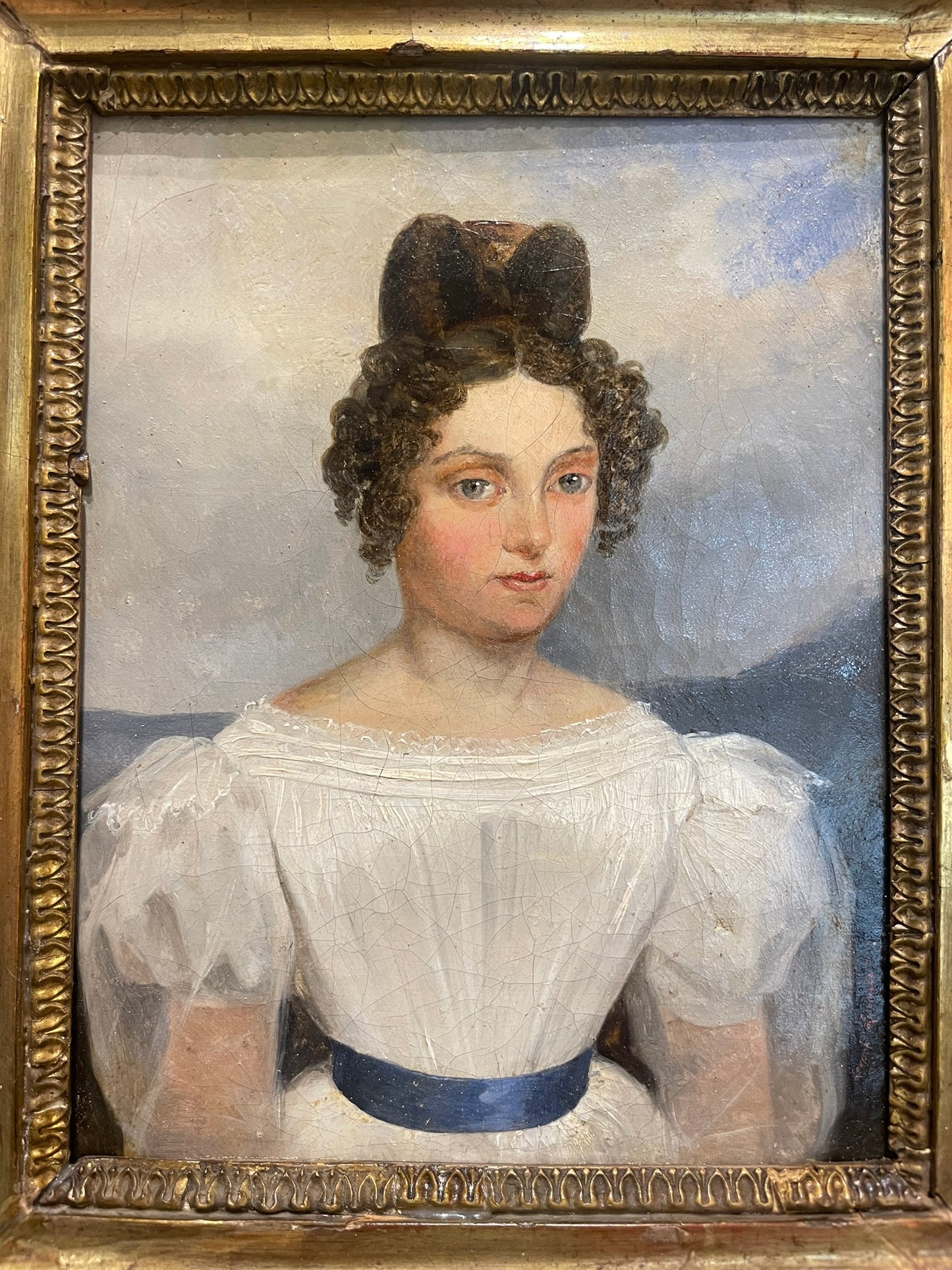@alina.malova
Portrait of a Young Woman with Black Ribbon. Robert-Léopold Leprince (Paris, 1800 – Chartres, 1847)
Portrait of a Young Woman with Black Ribbon. Robert-Léopold Leprince (Paris, 1800 – Chartres, 1847)
Couldn't load pickup availability
Portrait of a Young Woman with Black Ribbon
Signed Léopold Leprince in red at the right
Robert-Léopold Leprince (Paris, 1800 – Chartres, 1847)
France, c. 1825–1830
Oil on canvas, 16.5 x 21 cm (without frame); with 19th-century gilded wooden frame 28 x 33 cm
Painted during the French Restoration period (c. 1825–1830), this small portrait reflects the fashions of the time: curled hair arranged with a large dark bow, a white muslin dress with puffed sleeves, and a blue sash. The sitter appears before a subdued but atmospheric background, with a grey-blue sky and faintly sketched hills, rendered with the eye of an artist trained above all as a landscape painter.
The painting is signed Léopold Leprince in red at the right, identifying it as the work of Robert-Léopold Leprince, a member of an important family of artists. Son of the painter Anne-Pierre Leprince, he was the brother of Auguste-Xavier (1799–1826) and Gustave (1810–1837), all three devoted to landscape painting. Like the artistic dynasties of the previous century (Coypel, Van Loo, Vernet), the Leprince family exemplifies the transmission of painterly tradition in early 19th-century France.
Leprince exhibited at the Paris Salon from 1822 to 1844, receiving a medal in 1824. Known primarily for landscapes and rural scenes painted en plein air in the forest of Fontainebleau and the countryside around Paris and Chartres, he occasionally turned to portraiture, as in the present canvas. His landscapes are today preserved in major institutions such as the Metropolitan Museum of Art (New York), the Fondation Custodia (Paris), the Louvre, and Versailles.
The stretcher bears the stamp of Roch Petit, Passage de l’Opéra, a Parisian supplier active in the 1820s. This stamp links the work directly to the Parisian milieu in which Leprince himself worked, with an atelier in rue Childebert, before he eventually settled in Chartres. The combination of signature, period, and provenance situates this portrait firmly within his most active years, offering a rare example of his portraiture.
Materials
Materials
Dimensions
Dimensions
Care information
Care information










Image with text
Pair text with an image to focus on your chosen product, collection, or blog post. Add details on availability, style, or even provide a review.









